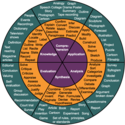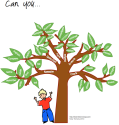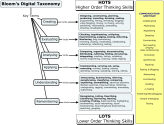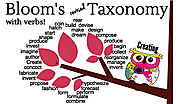-
About
- About Listly
- Community & Support
- Howto
- Chrome Extension
- Bookmarklet
- WordPress Plugin
- Listly Premium
- Privacy
- Terms
- DMCA Copyright
- © 2010-2025 Boomy Labs


I love Blooms Taxonomy and those of you who are regular readers of Educational Technology and Mobile Learning can tell this from the frequency of posts I publish . There is an entire section here labelled Blooms Taxonomy for teachers full of resources and materials for teachers to learn about this taxonomy and every time I come across a good resource I add it to that section.

I have been recently engaged in expanding Blooms Taxonomy section here in Educational Technology and Mobile Learning to include new resources published for the first time. Blooms Taxonomy for The iPad and Blooms Taxonomy for The Web are the most recent additions in this regard. I am also working on Blooms Taxonomy for Android.

One of the main objectives underlying our work as 21st century teachers and educators is to use technology to create innovative, creative, and engaging learning environments for our students.The focus now has been shifted from whether or not to use technology to how to use this technology to improve teaching and learning.

What makes Bloom's Taxonomy such a power tool is its flexibility in framing almost anything-which is why you've been seeing a lot of it around lately, and will likely continue to.

As a teacher, I relish the days of summer because I am given the opportunity to learn, rethink, design, and fine tune my teaching with the hope of being able to inspire students and teachers in the coming school year.
Bloom's Taxonomy gets an active makeover in this infographic, which provides a way to think about how the actions involved in a class assignment might be categorized in the schema. Mia MacMeekin made this and many other interesting infographics, which can be found on her website, An Ethical Island.

Bloom's Taxonomy gets an active makeover in this infographic, which provides a way to think about how the actions involved in a class assignment might be categorized in the schema. Mia MacMeekin made this and many other interesting infographics, which can be found on her website, An Ethical Island.
